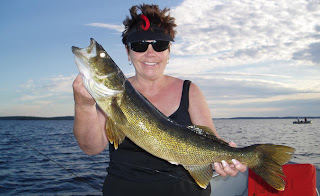Fishing Anglers fight with other Fishing Anglers based on different types of fishing
Author: She's So Fly
How many different types of fishing are there?
There are many different type of fishing for the sports enthusiast to choose from. These basic types include fly fishing, gear/lure fishing, hand fishing, bow/spear/harpoon fishing, deep sea/trolling fishing, dredging, netting, kite fishing, and ice fishing.
Each type of fishing has many different methods and techniques based on preference and demographics. Like, fly fishing, deep sea, trolling, inland, fishing the flats or off of a pier. And then there is freshwater, which is primarily in lakes and rivers, and fly fishing can also be done there too.
Through blogging, I have discovered that many anglers fight with other anglers due mainly to catch and release or catch and eat beliefs. Some fishers consider catch-and-release simply a way to protect a valuable resource; others consider it a personal moral choice. Whatever their reason for practicing catch-and-release, anglers continue to debate the best ways to play and release a fish in order to reduce buildup of deadly lactic acid and improve mortality. Is catching and eating the most ethical kind of fishing? Some anglers believe so.
The cultures of fishing -- fly-fishers, tournament bass anglers, steelheaders who use bait and steelheaders who fling flies, freshwater and salt water anglers, male anglers, female anglers and all the rest -- tend to ignore each other, and/or talk behind each others backs.
America alone has around 44 million fishing anglers.
I have my own opinions as well on each, but I want to point out that I support most types of fishing when performed ethically – but my personal favorite is fly fishing.
I have also lost a few opportunities with sponsorships and endorsements because I do not specialize in one type of fishing – and I think that is ridiculous. If I were to only support one type of fishing such as fly fishing, then as a blogger and promoter of the sport of fishing, I would not reach as many readers and future fishing angler generations to come. I would not be able to educate and inform as many readers on techniques, tips and tricks, cost savings etc that they may benefit from by reading my blog. For example, when I googled "fly fishing" blogs and "fishing" blogs, the amount of information was drastically different – see below:
"women's fishing blogs" - About 21,000,000 results
"women's fly fishing blogs" - About 953,000 results
"women's fly fishing and outdoor blogs" - About 462,000 results
"women's fishing and outdoor blogs" - About 5,540,000 results
My blog for www.shessofly.com is http://fliesonly.blogspot.com/ and typically ranks #1 to #7 which the search terms mentioned above.
In fact it is ALL types of fishing combined that support the $125 Billion Fishing Industry and contribute to the $ 7 Trillion Travel Industry
Support diversity and stop fighting - all you fishing anglers need to unite and learn to get a long and respect the different types of fishing – assuming each fishing angler is legally permitted and following their local rules and regulations and are not doing anything illegal.
Tight Lines and Fun Times, www.ShesSoFly.com
Article Source: http://www.articlesbase.com/fishing-articles/fishing-anglers-fight-with-other-fishing-anglers-based-on-different-types-of-fishing-4204149.html
About the Author
Explore Fly Fishing and other Outdoor activities for women with Sherri Russell, editor of She's So Fly. "Ladies, you don't have to be a "tom boy" to like to fish. I am a girly-girl at heart, I am who I am, and I like what I like. Fishing can be just as challenging, enjoyable, relaxing and rewarding for women as it is for men." www.ShesSoFly.com and www.FishingForACause.com




